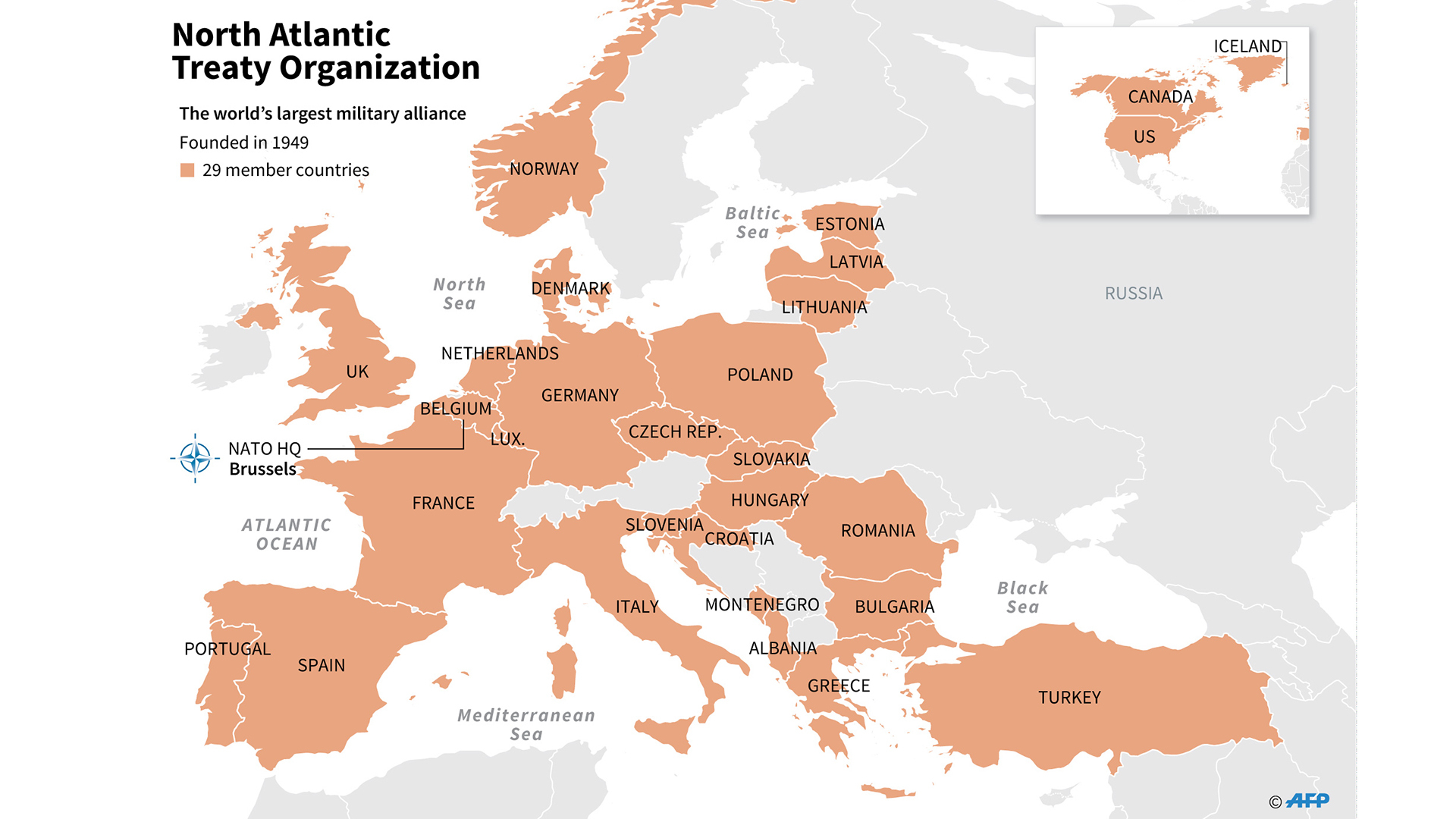NATO Member Countries

Nato members – The North Atlantic Treaty Organization (NATO) is a political and military alliance of countries from North America and Europe. It was established in the aftermath of World War II to prevent another such conflict.
NATO members, representing diverse nations and perspectives, convened in Washington, D.C., for a pivotal summit. At this gathering, leaders discussed pressing global issues, reaffirmed their collective commitment to security, and charted a course for the future of the alliance. The NATO Summit Washington DC showcased the enduring strength and unity of NATO members, underscoring their unwavering resolve to safeguard peace and stability.
As of 2023, NATO has 30 member countries. The following table lists all NATO member countries, along with the date they joined the alliance:
NATO Member Countries
| Country | Date Joined | Region |
|---|---|---|
| Albania | April 1, 2009 | Southeast Europe |
| Belgium | August 24, 1949 | Western Europe |
| Bulgaria | March 29, 2004 | Southeast Europe |
| Canada | August 24, 1949 | North America |
| Croatia | April 1, 2009 | Southeast Europe |
| Czech Republic | March 12, 1999 | Central Europe |
| Denmark | August 24, 1949 | Northern Europe |
| Estonia | March 29, 2004 | Northern Europe |
| France | August 24, 1949 | Western Europe |
| Germany | May 6, 1955 | Central Europe |
| Greece | February 18, 1952 | Southeast Europe |
| Hungary | March 12, 1999 | Central Europe |
| Iceland | August 24, 1949 | Northern Europe |
| Italy | August 24, 1949 | Southern Europe |
| Latvia | March 29, 2004 | Northern Europe |
| Lithuania | March 29, 2004 | Northern Europe |
| Luxembourg | August 24, 1949 | Western Europe |
| Montenegro | June 5, 2017 | Southeast Europe |
| Netherlands | August 24, 1949 | Western Europe |
| North Macedonia | March 27, 2020 | Southeast Europe |
| Norway | August 24, 1949 | Northern Europe |
| Poland | March 12, 1999 | Central Europe |
| Portugal | August 24, 1949 | Southern Europe |
| Romania | March 29, 2004 | Southeast Europe |
| Slovakia | March 29, 2004 | Central Europe |
| Slovenia | March 29, 2004 | Southeast Europe |
| Spain | May 30, 1982 | Southern Europe |
| Turkey | February 18, 1952 | Southeast Europe |
| United Kingdom | August 24, 1949 | Western Europe |
| United States | August 24, 1949 | North America |
NATO’s Role in Global Security: Nato Members
NATO, the North Atlantic Treaty Organization, is a military alliance of countries from North America and Europe established in the aftermath of World War II to prevent another such conflict. NATO’s primary mission is to safeguard the freedom and security of its members through political and military means.
NATO has played a significant role in major conflicts and peacekeeping operations worldwide. During the Cold War, it served as a bulwark against the Soviet Union and its allies, deterring potential aggression and maintaining stability in Europe. In recent years, NATO has been involved in peacekeeping missions in Bosnia, Kosovo, and Afghanistan.
Current Role in Global Security, Nato members
In the 21st century, NATO continues to play a vital role in addressing global security challenges. The organization has adapted to meet new threats, such as terrorism, cyber warfare, and the proliferation of weapons of mass destruction. NATO also works closely with partner countries and international organizations to promote stability and security worldwide.
NATO’s Structure and Organization

NATO’s structure is designed to ensure that the organization can respond effectively to a wide range of security challenges. The organization is led by the North Atlantic Council (NAC), which is composed of representatives from all member states. The NAC is responsible for setting NATO’s overall policies and priorities. It is also responsible for approving all major decisions, including those related to the use of military force.
Below the NAC are a number of committees and working groups that are responsible for specific areas of NATO’s work. These committees and working groups include the Military Committee, the Political Committee, and the Economic Committee. The Military Committee is responsible for providing military advice to the NAC and for overseeing NATO’s military operations. The Political Committee is responsible for developing NATO’s political policies and for coordinating NATO’s relations with other international organizations. The Economic Committee is responsible for developing NATO’s economic policies and for coordinating NATO’s economic assistance to member states.
NATO’s structure is designed to be flexible and adaptable. The organization can quickly and easily adjust its structure to meet new challenges. This flexibility has been essential to NATO’s success in the past, and it will continue to be essential to NATO’s success in the future.
NATO’s Organizational Chart
The following organizational chart illustrates the relationships between the various components of NATO.
| Component | Role |
|---|---|
| North Atlantic Council (NAC) | Sets NATO’s overall policies and priorities. Approves all major decisions, including those related to the use of military force. |
| Military Committee | Provides military advice to the NAC. Oversees NATO’s military operations. |
| Political Committee | Develops NATO’s political policies. Coordinates NATO’s relations with other international organizations. |
| Economic Committee | Develops NATO’s economic policies. Coordinates NATO’s economic assistance to member states. |
The recent expansion of NATO members has been met with mixed reactions. Some, like Senator Marco Rubio , believe that it will strengthen the alliance and deter Russian aggression. Others, however, worry that it could provoke Russia and lead to a new Cold War.
Only time will tell what the long-term consequences of NATO’s expansion will be.